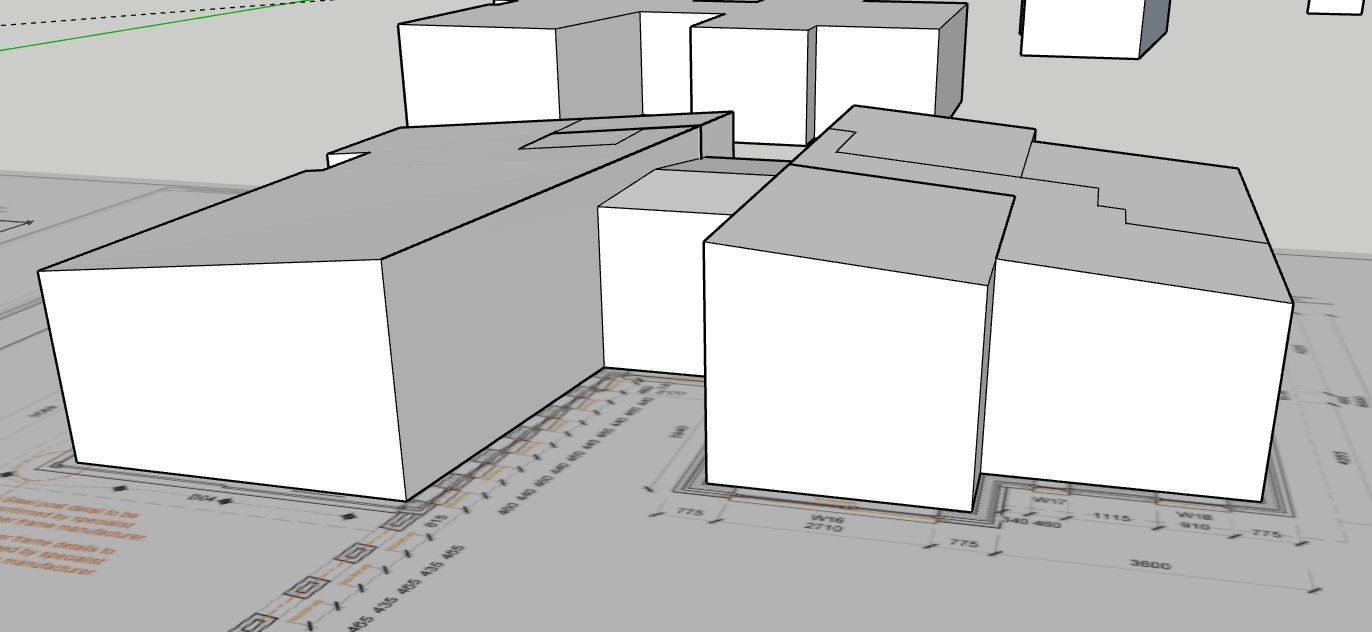
Part L: Conversion SAP Calculations
Building Compliance Testing Limited can provide you with a fast and cost effective Elmhurst Certified SAP Calculations.
 Conversion SAP Calculations
Conversion SAP Calculations
A Conversion SAP Calculation will be asked of by your Building Control Officer or Building Inspector if there has been a change of use of a building into a residential end use.
A SAP (Standard Assessment Procedure) calculation for a building conversion in the United Kingdom is used to assess the energy performance and energy efficiency of the converted structure. A conversion typically involves repurposing an existing building, such as an old industrial building, barn, or even a house, into a different use, like residential apartments, known in the industry as a change of use. The goal is to ensure that the converted building meets the required energy performance standards and complies with building regulations. Here’s what is involved in a SAP calculation for a conversion and some information on U-value targets:
Components of a SAP Calculation for a Conversion:
Building Information: Detailed information about the existing structure and the proposed conversion, including the size of the building, orientation, layout, and any modifications to be made.
Insulation: Data on the insulation materials and thickness used in the conversion, including U-values for walls, roofs, and floors. The U-value represents the thermal performance of building elements.
Glazing: Information about the type and specifications of glazing, such as windows and doors, including details on the glazing’s U-values and solar heat gain characteristics.
Ventilation: Details about the ventilation system in the conversion, including its type, efficiency, and controls. Proper ventilation is essential for indoor air quality and energy efficiency.
Heating and Cooling: Information about the heating and cooling systems in the conversion, including their energy efficiency, fuel sources, and controls.
Thermal Bridging: Consideration of thermal bridging, which is the heat loss that can occur at junctions or connections between different building elements. Reducing thermal bridging helps improve energy efficiency.
Air Permeability: Results of an air permeability test, which measures how airtight the converted building is. Lower air permeability values indicate better energy efficiency.
Solar Heat Gain: Assessment of the solar heat gain from glazed areas in the conversion. This accounts for the impact of sunlight on the heating and cooling requirements of the space.
Occupancy and Usage: Information on how the conversion will be used and the expected occupancy patterns. This data includes internal heat gains from occupants and appliances.
Location and Climate Data: The location of the building and local climate data are considered in the calculation, as different regions have varying energy demands for heating and cooling.
U-Value Targets for Conversions:
U-value targets for conversions can vary based on the specific building type, the materials used, and local building regulations. However, in general, the U-value targets for conversions aim to achieve the minimum required standards for insulation. The UK building regulations set specific U-value targets for different building elements, such as walls, roofs, and floors. For example:
External walls: The U-value target for external walls in conversions may be around 0.28 W/m²K, but this can vary depending on factors like insulation thickness and the type of wall.
Roof: The U-value target for roofs in conversions may be around 0.18 W/m²K, although this can also vary depending on the specific circumstances.
Floors: U-value targets for floors in conversions can be around 0.25 W/m²K, but, again, it depends on various factors.
It’s essential to consult with a qualified energy assessor or consultant to determine the specific U-value targets and requirements for your conversion project, as they can vary based on the building’s location and the local authority’s regulations.
To learn more about what are SAP Calculations click here.
The SAP Calculation Process
A SAP Assessor commences their work by utilizing architectural plans and construction specifications in conjunction with a comprehensive HVAC (heating, ventilation, and air conditioning) specification. Consequently, the drawings must be meticulously scaled, accurate, and encompass all facets, including elevations, sections, floor plans, and site layouts.
The assessor then proceeds to create a model of the dwelling(s) within SAP software, working from these scaled plans, whether manually or electronically. This digital representation forms the foundation for SAP Calculations.
Within this model, the assessor integrates the heating, lighting, and ventilation systems, selecting specific products from manufacturer databases when applicable. Detailed thermal elements, encompassing walls, floors, roofs, and openings, are meticulously included, along with calculations for thermal junctions. Additionally, any renewable technologies and cooling systems are incorporated.
Upon finalization, the SAP calculation generates an array of comprehensive reports, spanning site layout, heat losses, energy demands, seasonal variations, CO2 emissions, renewables contributions, and numerous other aspects.
Let’s Talk About Your Project
Just give us a call on 01621 493594 , or email us at contact@buildingcompliancetesting.com
Other Services
We can also offer a variety of other specialist services through our Partners, including:
– Water Efficiency Calculations
– U-value Modelling
– SBEM Calculations
– Energy Statements
We’re friendly and knowledgeable bunch so why not get in touch for a chat. You can always contact Building Compliance Testing with any questions through phone, email or our online chat service.
Don’t worry, we don’t charge for advice given over the phone, so why not ask for a free quote?
01621 493 594 | contact@buildingcompliancetesting.com
Let's Talk About Your Project?
Questions? We've Got Answers!
Find below a list of common frequently asked questions about Air Permeability Testing.
